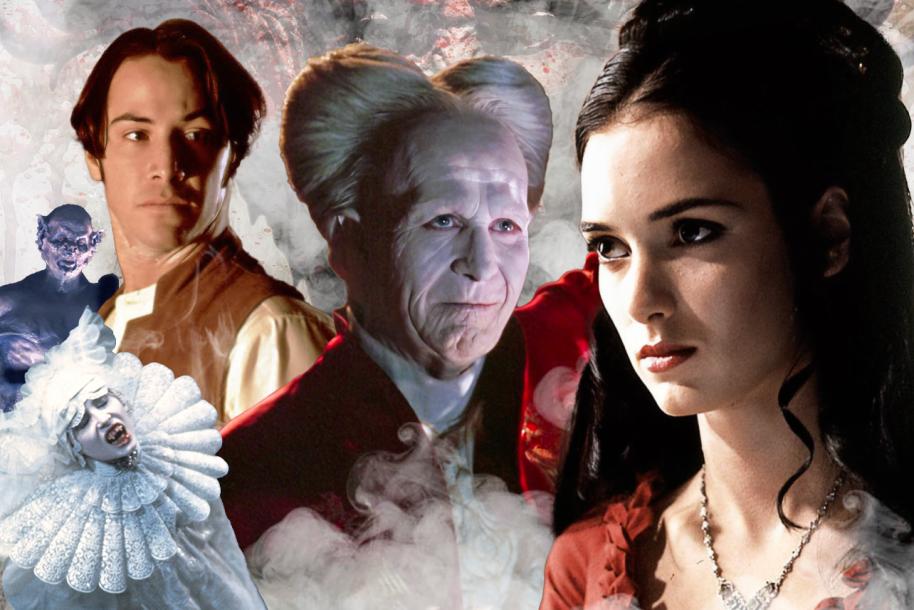More On:
Francis Ford Coppola
-
‘SNL’s Chloe Fineman Had A Melania Trump Bit So Good It Scored Her Work With Francis Ford Coppola
-
R.I.P. Elizabeth MacRae: ‘General Hospital’ And ‘The Incredible Mr. Limpet’ Star Dead At 88
-
R.I.P. Al Ruddy: ‘The Godfather’ And ‘Million Dollar Baby’ Producer Dead At 94
-
Frances Ford Coppola Says Studio Execs Aren’t Hired “To Make Good Movies” But To Help Studios “Pay Their Debt Obligations”
The Cannes Film Festival begins this week, and while the festival appears to offer its usual bounty of new and hotly anticipated work from a variety of beloved filmmakers, a lot of movie fans will think of it specifically as Megalopolis season. Director Francis Ford Coppola is unveiling his magnum opus: His first film in 13 years, a sci-fi drama that he’s been thinking about making since the 1970s, and almost made multiple times during the 1980s.
Faced with an advancing age and a desire to finally make this film he’d been dreaming of, Coppola sold off part of his wine empire to self-finance the $120 million movie, conceived as sort of a decline-of-Rome epic set in a futuristic America. Adam Driver plays an architect attempting to reconstruct a damaged metropolis as some kind of utopia, pitted against a traditionalist mayor played by Giancarlo Esposito. (If it truly addresses an empire’s descent into fascism, it sounds a bit like fighting Rand with Rand.) Nathalie Emmanuel, Aubrey Plaza, Shia LaBeouf, Laurence Fishburne, Dustin Hoffman, Jason Schwartzman, and Chloe Fineman also appear, among many others. A trailer went online this week, and it looks like a lot. A sort-of-behind-the-scenes article also went up this week, and it sounds like a lot, too. It sounds like Coppola is going full Apocalypse Now mode, and crossing his fingers that it won’t turn into One from the Heart mode. (Though notably, even Apocalypse Now was not regarded as a classic until years later.)

But another, non-Coppola film may turn out to have parallels to this one. Megalopolis has screened for some industry folks in Los Angeles in April 2024, but it makes its Cannes premiere on May 17 – just a few days short of the 25th anniversary of Star Wars: Episode I – The Phantom Menace. That movie was, at the time, the first directorial effort of Coppola’s pal George Lucas in 22 years, and another ambitious project that had been talked about for years, without any certainty that it would actually come to fruition. It was also, like Megalopolis, produced independently by its director, with 20th Century Fox merely distributing the movie, as it did the original Star Wars trilogy. Like Phantom Menace, it appears to take place in a world that would be impossible to imagine without visual effects, though they seem to approach their techniques from opposite directions: Phantom Menace fuses digital and practical effects because digital wasn’t ready to replace as much as Lucas would have liked (he would go even more digital-heavy with the later prequels). Based on those anonymous accounts of the Megalopolis set, Coppola seemed to favor more practical effects, but was forced by the scale of his ideas to dabble in superhero-style green-screening.
Of course, there are plenty of factors that make Megalopolis a vastly riskier proposition, as evidenced by the fact that it does not yet have a major distributor lined up. Lucas’s passion project lined up with the passion of Star Wars fans numbering in the millions; Megalopolis will not be able to recoup Coppola’s investment on the money of Adam Driver fans alone (even if Driver did become a star because of, yes, Star Wars). To be honest, the likelihood of this movie cracking $100 million in North America seems as remote as Phantom Menace’s was assured.
But just as the built-in interest among Star Wars fans allowed George Lucas to seemingly make whatever he wanted out of Phantom Menace – a strategy that alienated some fans and won some others over for life – the sensibility that practically radiates from the Megalopolis trailer (if more menacingly from that Guardian story) is a filmmaker operating by his own whims. After all, what’s the point of self-financing a movie unless you plan to make it a potential boondoggle? A lot of armchair industry analysts (a position that YouTube seems to have encouraged a formidable number of young people to accept, often unpaid) will talk how irresponsible and self-indulgent this is, but maybe the man who made The Godfather and The Conversation deserves a little more indulgence while he’s still with us, especially if he’s footing the bill anyway.
That’s not to say Megalopolis looks much like The Godfather. Actually, it looks like a wild fusion of other lavish Coppola experiments, from the heightened soundstage effect of One from the Heart to the baroque visual-effects orgy of Bram Stoker’s Dracula to the digital stylizations of Youth Without Youth. As with Phantom Menace, the movie will probably play better as a look inside a master filmmaker’s weird, filmmaking-saturated brain. That’s been the fun of later-period movies from Coppola’s buddies Lucas and Brian De Palma: Seeing how the so-called movie brats process the world through a lifetime’s library of cinematic input, a true instance of youth without youth. The Phantom Menace may have met a mixed reception back in 1999, but it’s a movie plenty of people still talk about (or, if you will, refuse to shut up about). Coppola deserves no less.
Jesse Hassenger (@rockmarooned) is a writer living in Brooklyn. He’s a regular contributor to The A.V. Club, Polygon, and The Week, among others. He podcasts at www.sportsalcohol.com, too.
 Fun
Fun Frisky
Frisky Nostalgic
Nostalgic Intense
Intense Adventurous
Adventurous Choked Up
Choked Up Curious
Curious Romantic
Romantic Weird
Weird















